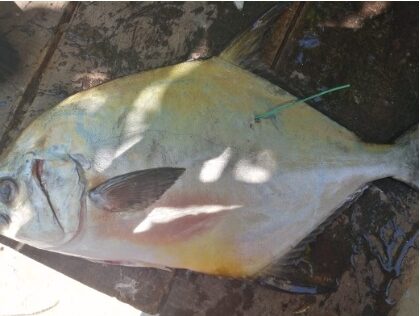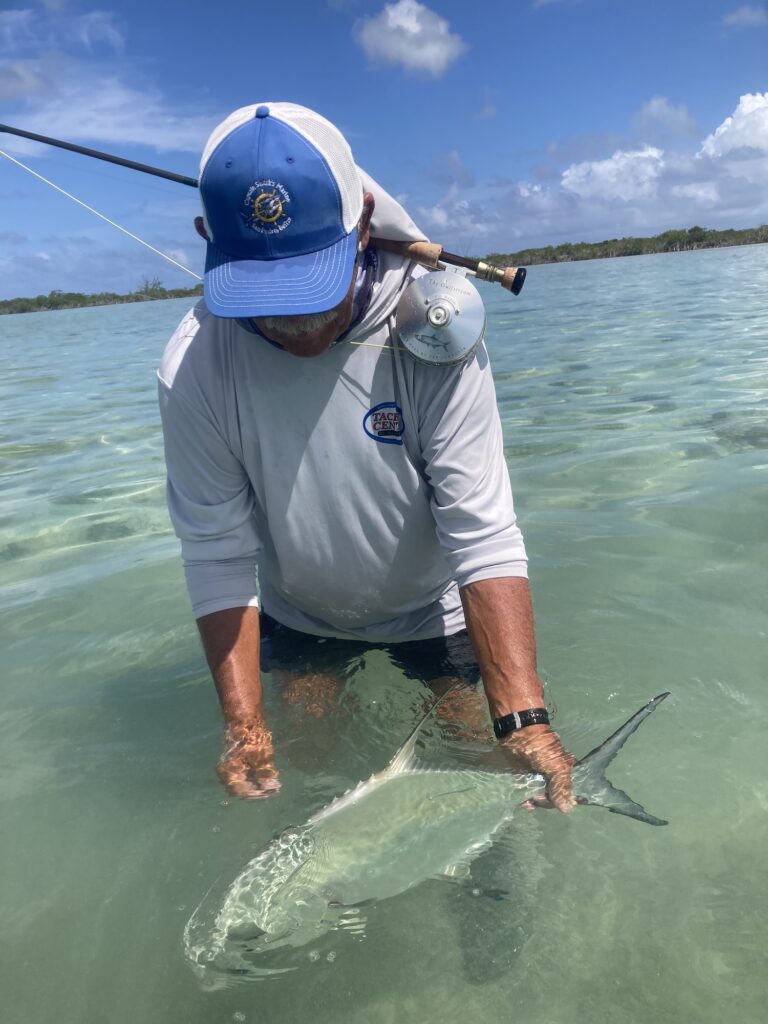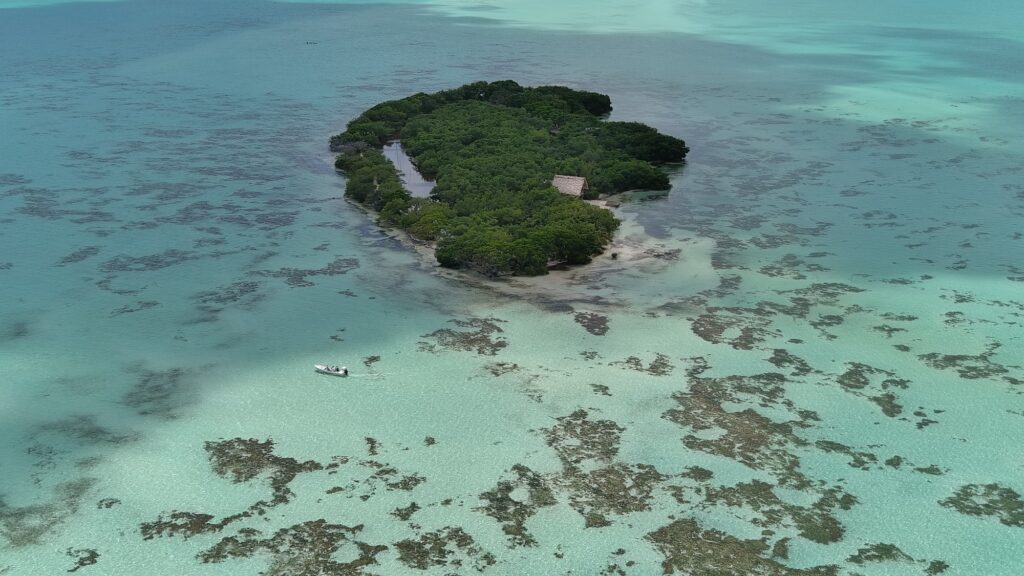Belize recognized the importance of the flats fishery to its economy and culture by making bonefish, tarpon, and permit catch-and-release only in 2009. Although the Yucatán Peninsula region of Mexico also has an important and well-known flats fishery, bonefish, tarpon, and permit are not protected against harvest. The only protections in Mexico come from protected areas, such as Sian Ka’an Biosphere Reserve that protects fish in Ascension Bay. This lack of protection poses a threat to the flats fishery in both Mexico and Belize, because the nations share the same fish populations.
This threat was recently highlighted by the harvest of a permit in Mexico that was tagged in Belize as part of BTT’s permit tagging project, which began in 2021. Its fork length measured 26.7 inches when it was tagged on August 1, 2023, near Cayo Rosario, which is within the Hol Chan Marine Reserve. Just seven weeks later, the permit was harvested by spear fishers near Mahahual, Mexico, on September 21.

The protected areas in Mexico, such as Sian Ka’an, Manatee Sanctuary of Chetumal, and Xcalak Reefs National Park, provide important protections for flats species. But when fish leave these protected areas, they are vulnerable to harvest. This is especially damaging given the economic importance of the flats fishery – a recent economic study of the flats fishery in the state of Quintana Roo revealed an estimated $45.2 million annual economic impact that supported over 1,600 jobs. Improved regulations are needed to protect the valuable fishery by minimizing the harvest of flats species, while accounting for the food needs of local people.

BTT thanks Kenneth Watkins for his help in permit tagging research. Ken tagged 155 permit in 2022, and 201 permit in 2023 on the fly for BTT!




